10.Apple 16GB iPhone 4 (CDMA, Verizon)

iOS 4: Best Features
The iPhone 4 uses Apple's A4 CPU, the same processor powering the Apple iPad. It runs the newly renamed iOS 4 operating system (which the iPad will also use, starting in the fall).
As part of iOS 4, the iPhone 4 gains a bevy of capabilities. One of them--multitasking--is long overdue, but as with the long-awaited cut-and-paste feature, Apple delivers on the promise of making multitasking work smoothly.
You quickly double-tap on the home button to pull up a pane that shows which apps are open. From there, you can swipe horizontally through the apps that the iPhone 4 has retained in either a running or suspended state.
When you find the app you want, you just click on the icon. The app will then resume its activity, and, if written to take advantage of this new feature, it will pick up precisely where you left off. At the very least, reaccessing the app will be faster.
Equally as elegant as multitasking is Apple's implementation of Folders, an increasingly necessary addition. To add icons into a folder, you simply drag one icon on top of another to create the folder, which automatically gets the name of the category those apps share--or, if you prefer, you can rename the folder on the spot. You can pack a maximum of 12 apps within a single folder (giving you three rows of four apps across the home screen). And, thanks to the addition of Folders, you can now add up to a maximum of 2160 apps.
Dramatic Camera Boost
The iPhone 4 brings much-desired camera and video recording advances, as well. The primary camera on the back bumps up from 3 megapixels to 5 megapixels, while retaining the same pixel size (which can further improve image quality). The camera also gains an LED flash, a backlit sensor, and an integrated 5X zoom. The camera now lets you shoot in high-def, at 720p, 30 frames per second; in addition, video gains the tap-to-focus feature already available on the still camera.
PCWorld's testing methodology for the iPhone 4's camera (as well three Android smartphones) was a truncated version of our regular testing methodology for point-and-shoot cameras. We affixed each phone to a tripod and shot two images with the flash turned off:
1. One still-life scene with a color chart and delightful random objects to rate exposure quality and color accuracy.
2. A target chart and printed text to evaluate sharpness and distortion levels.
Here's evidence that megapixel counts rarely matter: Apple's 5-megapixel iPhone 4 beat out the other smartphones we tested for overall image quality, serving up well-exposed, brightly colored images. However, the iPhone 4's image quality did lag behind the competition in two categories, sharpness and visible distortion.
We tested the camcorder capabilities of the iPhone 4 (along with those same three Android smartphones) in the same way we test pocket digital camcorders. Lab Manager Tony Leung recorded a 1-minute video of a toy train and Ferris wheel to gauge several aspects of the video quality: smoothness of motion, color accuracy, and artifacting. We shot the same scene twice, with each device in the same tripod location at its highest video-quality setting--once in bright indoor lighting, and again with the overhead lights turned off and a floor lamp turned on behind the phone. Once we shot all of the footage, our panel of judges rated each clip for its overall quality.
9.T-Mobile myTouch 4G

Impressive and Speedy
The latest addition to the T-Mobile myTouch family, the myTouch 4G($200 with a two-year contract from T-Mobile; price as of 10/28/2010) has the most impressive specs of the myTouch phones to date, boasting a front-facing video camera, HSPA+ data speeds, and HD video recording. HSPA+ coverage isn't everywhere, however--and it might be spotty in cities that do support it.High-Quality Design
The first thing I noticed about the phone is its stylish, yet sturdy design. The phone, HTC-designed, feels more high-quality than the previous, plasticky myTouch models. The plastic is still there (on the face of the phone and on the hardware buttons), but the device is primarily metal and has the feel of a higher-end phone. The phone will come in four colors: white, black, plum, or red.
The phone has a vibrant 3.8-inch WVGA display, which nicely showcases the phone's user interface. Below the display, you'll find four hardware buttons: Home, Menu, Back, and Genius (more on that one later). Measuring 4.8-by-2.4-by-0.43 inches, the myTouch 4G is a manageable size.
Like the other myTouch phones, the myTouch 4G comes in a handy case for storing all of your phone's accessories.
Custom Skin Over Android
Running Android 2.2, the myTouch 4G has a custom skin, which is sort of a mash-up between that of the HTC Sense and the myTouch skin we saw on the myTouch Slide.
As on the HTC Sense, you get a dynamic weather app and a socially-aware address book (which aggregates your friends' contact information from your social networks). You also get HTC's Friend Stream, which takes all of your friends' status updates, links, and photos from your various social networks and displays them in a single feed.
Another unique, user-friendly feature is MyModes, which lets you customize your phone for your work life and for your personal life via widgets, homescreen apps, and wallpapers. If you want to avoid work e-mail and appointments as much as possible over the weekend, you can simply set those applications to be hidden from your homescreen when you leave your office. You can program MyModes to switch by location (using GPS), or you can switch it manually.
The Genius button, mentioned earlier, is a useful tool for smartphone newbies. Press it, and you jump to a simple voice-command menu. From there, you can use commands to make calls, compose and send texts and e-mails, search the Web, and more. It worked fairly well in my hands-on tests, taking a few seconds to figure out what you said, but producing generally accurate results. The more you use the feature, the better it gets, too: It employs Nuance's Dragon Dictation Software, which gradually learns your voice and thereby improves response time.
Remember T-Mobile MyFaves? T-Mobile's cheap calling plan of yore (which permitted users to make unlimited calls to five people of their choice) is back--this time, in the form of a speed-dialer application on the Slide. The app has a kind of 3D effect that you spin through to get quick access to your favorite friends' contact information, pictures, and social networking account links. You can add up to 20 friends as your "faves." You can easily get to the MyFaves screen by hitting the dedicated hardware button on the phone's face.
The myTouch has a new feature called Media Room, which organizes all of your music, video, and Internet radio in one place. For media syncing, the myTouch comes with the excellent doubleTwist software onboard. Of course, you also get the dedicated YouTube app, which also supports HQ videos. HQ versions of YouTube videos are leaps and bounds better in quality than the normal, fuzzy YouTube videos.
While I like that the myTouch skin provides customizability, I don't really like what HTC and T-Mobile have done with the 4G's camera interface. Rather than the stock Android 2.2 interface, which gives you access to white balance and exposure controls, the myTouch's camera does all this automatically for you. It isn't a big deal, but it is an example of how these skins can sometimes interfere with features found in stock Android. I honestly think that the myTouch would be slightly better--and perhaps even faster--if it ran the stock Android OS.
Superb Camera/Camcorder
Despite these gripes, I was really happy with how my photos taken with the myTouch's 5-megapixel camera turned out. On a gloomy World Series day in San Francisco, my outdoor photos looked pretty good, considering the low light. Photos taken indoors looked sharp and vibrant, but perhaps a bit overexposed (a common problem with smartphone cameras). The camera also has an LED flash, autofocus, and face detection.HSPA+: How Fast Is It?
The myTouch 4G runs on T-Mobile's 3G HSPA+ network, but the company defends the MyTouch 4G name by pointing out that the connection speeds seen on the phone are on a par with LTE and WiMAX.
And from what we've seen, T-Mobile's HSPA+ network really is kicking out speeds comparable with existing 4G networks--in certain places. Sitting at in a café in San Francisco, where HSPA+ service is available (and strong), a T-Mobile rep achieved download speeds of 3.5 megabits per second and upload speeds of 0.66 mbps per second in one test, then 4.5 mbps down and 1.31 mbps up in a second test. The rep said he'd seen download speeds of 6 mbps earlier in the day.
Unfortunately, over at our offices on the other side of town, we didn't achieve such high speeds. An average of three tests yielded download speeds of 28 kilobits per second (or 0.03 mbps) and an average upload speed of 86 kbps (or 0.08 mbps) over the regular 3G network. At least in San Francisco, it really depends on where you are in the city to get the high HSPA+ speeds.
Unlike Sprint, which charges $10/month for 4G, whether you have coverage or not, T-Mobile does not charge an extra fee for HSPA+.
Performance
Call quality was pretty good, but I did hear some strange static in the background of a few of my calls. Callers on the other end of the line were quite pleased with how my voice sounded. I made my test calls on a blustery, noisy World Series day (with multiple helicopters flying overhead), but my contacts said that they could barely hear the background noise.
Like a few of the older BlackBerry models on T-Mobile, you can make calls over Wi-Fi with the myTouch 4G. In fact, the myTouch 4G is the first phone on T-Mobile to have this option. My calls over Wi-Fi worked just fine, but be aware that if you leave that Wi-Fi hotspot, your call will be disconnected.
The myTouch 4G is powered by the second-generation Qualcomm 1GHz Snapdragon processor and 768MB of RAM. The phone is incredibly snappy, both in the browser (over Wi-Fi especially) and throughout the software. Native video playback was also quite impressive.
Conclusion
T-Mobile and HTC definitely have a real winner here with the myTouch 4G. The powerful processing speeds paired with HSPA+ data speeds are hard to beat when it comes to watching videos and browsing the Web. The camera is also quite good (though the camcorder's microphones aren't the best). If you don't have HSPA+ available in your city, however, you might want to hold off on buying a myTouch 4G until coverage is expanded. You won't be able to make video calls over the network unless you have HSPA+ connectivity (you can still make them over Wi-Fi, though). Even in a city where it is supported (like San Francisco), HSPA+ still has a ways to go for area coverage.
8.Samsung Epic 4G


The Samsung Epic 4G ($250 with a two-year contract from Sprint, as of August 20, 2010) stands out from its Galaxy S siblings for a few reasons. Unlike the others, it has a physical keyboard and a front-facing camera, and it's the second phone to run on Sprint's 4G network. How does it stack up against the other 4G device, the HTC EVO 4G? And how does it compare to other mega-smartphones in the Android universe? Read on.
Design
In the last week, I've reviewed three phones with hardware keyboards: the BlackBerry Torch, the Motorola Droid 2, and now the Epic 4G.Keyboard death watch? Not so much. Out of all of these phones, the Epic definitely has the best keyboard. The keys are nicely spaced and have a good clickiness to them.
If you don't feel like using the physical keyboard, you have even more options on the touchscreen. You can use the TouchWiz keyboard, the Swype keyboard, or the native Android keyboard. I found the display quite responsive, and big enough to type on comfortably.
Like the other Galaxy S phones, the Epic 4G sports a 4-inch Super AMOLED display. Samsung's Super AMOLED technology puts touch sensors on the display itself, as opposed to creating a separate layer (which Samsung's old AMOLED displays had), making it the thinnest display technology on the market. Super AMOLED is fantastic--you really have to see it in person. Colors burst out of the display, and animations appear lively and smooth. Some reviewers have noted that colors look oversaturated, but I don't really mind the effect. The display also does quite well in bright outdoor light, too, though the phone's glossy hardware sometimes reflects a killer glare.
TouchWiz 3.0 Interface
The Samsung Epic 4G runs Android 2.1 ("Eclair") with Samsung's own TouchWiz 3.0 user interface. Overall, this version of TouchWiz is a lot better than the older iteration, which we saw on phones such as the Samsung Behold II for T-Mobile (a phone that was slow and difficult to navigate).
Although this version is an improvement, I encountered some familiar issues with TouchWiz 3.0. Despite the 1GHz Hummingbird processor, the phone lagged slightly when I flipped through menus and scrolled down contact lists or Web pages. Here's hoping the Epic will get a speed boost when it receives the upgrade to Android 2.2 ("Froyo").
Like HTC and its Sense offering, Samsung has its own social media aggregator. Social Hub combines streams from your Facebook, MySpace, and Twitter accounts into a single view. It is a useful feature if you need a simple way to keep track of your networks. One random feature is Mini Diary, which lets you create blog entries with photos, weather info, text messages, and more. When I first tried Mini Diary on the European Galaxy S, I couldn't figure out how to get my entries off the device. Samsung followed up with me after my original review, thankfully, and confirmed that you can indeed post entries (though only those with photos) to various social networks or send them to friends via text. After you create an entry, you press the Menu key in the bottom-left corner, and it gives you MMS and Publish options. If you choose Publish, you can send your item to Facebook or MySpace.
My biggest problem with the TouchWiz interface is that it is overdone--so much so that the result doesn't even look or feel like an Android phone. Additionally, the skin sometimes interfered with the speediness of the Epic (see the "Performance" section below). According to Samsung, the entire Galaxy S family will be upgradable to Android 2.2.
Camera
We put the 5-megapixel camera of the Epic 4G through a modified version of our PCWorld Labs test for point-and-shoot digital cameras, along with the iPhone 4, the Motorola Droid X, and the HTC EVO 4G. Unfortunately our test panel was not very impressed with the photo quality of the Epic, as it earned the lowest score out of the four and an overall word score of Fair. It finished ahead of the EVO 4G in exposure quality, but landed in last place in our color-accuracy, sharpness, and distortion tests.
In my own hands-on tests outdoors, I was pretty impressed with the image quality. Colors looked bright and natural, and details were sharp. Only a slight bit of graininess appeared in the shots; I had to look really closely on my monitor to see it.
On the other hand, the Epic took second place in overall video quality. Its performance skewed heavily toward good performance in bright light. According to our panel, its bright-light footage looked a bit underexposed and slightly grainy in a full-screen view, but great at smaller sizes. The autofocus searches a little before locking on to a crisp image. In low light, the footage was a touch too murky and undefined to earn a better rating. Once the Epic gets an upgrade to Android 2.2, you'll be able to use its flash as a light while capturing video. Perhaps this will fix the issue.
The handset's microphone, meanwhile, picks up audio a bit too well: On the Epic our audio clip sounded far too loud and blown out, whereas some of the other smartphones in our comparison barely picked up the audio at all.
Out of all the powerful smartphone cameras I've tested lately, those of the Galaxy S phones have the cleanest, most user-friendly interface. Unlike with the iPhone 4, here you can pick from a wide variety of shooting modes (Vintage, Smile Detection, Panorama, Continuous, and many more) and easily tweak the camera's settings according to your environment and subject.
Notably the Epic also has a front-facing camera for making video calls. Sprint has preinstalled Qik on the Epic for your video-chatting pleasure. I was able to test Qik only over 3G, and its quality was too choppy to really carry on a conversation. I suspect the quality is much better over 4G.
Multimedia
The TouchWiz music player is touch-friendly and easy to navigate. It showcases album art nicely, too, with an iTunes Cover Flow-style user interface. Sound was clean over my own earbuds, and decent via the external speakers.
One of the most intriguing features of the Captivate is the Samsung Media Hub, which will come with all of the Galaxy S phones. Media Hub is Samsung's answer to iTunes, a store for purchasing music and video. Unfortunately, Media Hub is not yet available to users right now; according to my contact at Samsung, Media Hub will launch this fall. Customers will be able to download the service via an over-the-air update.
Unlike the EVO 4G, the Epic does not ship with YouTube HQ--a big disappointment. YouTube HQ is a feature that enhances certain YouTube videos' quality tremendously. Unfortunately, without HQ, YouTube videos are almost completely unwatchable on the Epic. With such an incredible screen, this omission seems like a big oversight.
Performance
Like the other Galaxy S phones, the Epic 4G is powered by a 1GHz Hummingbird processor. For the most part the Epic was incredibly fast, but I did encounter some stalls in the user interface in one particular action. I shared one of my Gallery photos with a friend via Gmail. As the phone was delivering the message, I attempted to browse through more gallery images. The Epic began to stutter and freeze between the images. I then closed the Gallery app and tried to open another--the phone completely froze for about 20 seconds. I was able to replicate this problem a second time when I tried to send another image. My contact did receive both images, but it was disturbing to see the phone freeze up like that as I was trying to send an attachment.
One of the big deals of the Epic 4G is evident in its name: It's the second 4G-support phone on Sprint. And as with the other handset, the HTC EVO 4G, you can use the Epic 4G as a mobile 4G hotspot and connect up to five Wi-Fi-enabled devices to it. Unfortunately, we were unable to test the 4G performance on the Epic, as Sprint's WiMax network isn't switched on in the San Francisco Bay Area yet. I'll update this review once we review the Epic in a 4G-supported area.
Browsing the Web over Sprint's 3G network was sufficiently speedy, however. Call quality was also quite good, though I heard a bit of static on the line in a few calls.
Out of the Galaxy phones I've tested, the Epic 4G is definitely the best, and it's certainly one of the top Android phones available. The nicely designed physical keyboard, paired with the 4G goodness and front-facing camera, makes it hard to beat. The real question is whether it's a better choice than the HTC EVO 4G. It's a close call, but the Epic 4G slightly edges out the EVO.
As a multimedia device, the Epic wins. Although the Epic's display is smaller than the EVO's, its quality is better. The Epic also supports more video codecs, such as Xvid, DivX, and H.264 formats (the EVO doesn't). Then again, the Epic does not have an HDMI port, while the EVO does. In the camera department, the EVO's 8-megapixel snapper wins on image quality, but I like the Epic's user interface better. As for Android skins, it's really a matter of taste. And when it comes to input, the Epic definitely wins for having three software keyboards as well as a very good hardware keyboard.
Again, though, it is a close call, and the biggest difference between the two is the price: After a $100 mail-in rebate, the Epic 4G is $50 more than the $200 EVO 4G. But on top of that, as with the EVO 4G, you must buy a data plan for your Epic (Sprint's unlimited plan is $70, which is less expensive than AT&T or Verizon), as well as pay a $10 fee for 4G (even if 4G isn't supported in your area). And if you want to use the mobile hotspot, that's an additional $30 every month.
7.T-Mobile myTouch 4G Slide

Best Phone Camera Ever
Earlier this month, T-Mobile announced the latest addition to its myTouch family, the myTouch 4G Slide ($200 with a two-year contract, as of July 15, 2011). The specs look pretty standard for this summer's slew of high-end smartphones: 4G connectivity, a 3.7-inch Super LCD screen, Android 2.3 and a dual-core processor. All of this is great and everything, but what really caught my eye were the camera's specs. In fact, T-Mobile claims that the Slide has the most advanced camera of any smartphone available. So how does the Slide hold up as both a phone and a camera? Read on to find out.
Slider Design
As the name implies, the HTC-built myTouch 4G Slide has a slide-out full QWERTY keyboard in addition to a 3.7-inch WVGA super LCD touchscreen. For a slider phone, I was surprised with how thin the Slide is at only 0.54 inches thick. For comparison, the keyboard-lessmyTouch 4G is 0.43 inches thick. It weighs a manageable 6.5 ounces.
The keyboard's keys are nicely spaced and large enough, but unfortunately they are a bit too flat for my liking. I found myself using Swype on the touch keyboard more than the physical keyboard.
Killer Camera
The Slide has an 8-megapixel camera and an HD camcorder that can shoot video in up to 1080p. It also has an array of advanced features. As phones beat editor, my camera knowledge is pretty basic, so I went to our cameras beat editor, Tim Moynihan, to decipher some of these specs and features for me.
The Slide supposedly has zero shutter lag, which sounds good on paper, but it is something we definitely needed to put to the test. According to Tim, the autofocus system has to be pretty fast in order to capture non-blurry images without any delay. Looks like T-Mobile's claims are true; the Slide's camera was perfectly snappy and smoothly handled every subject we threw at it.
The camera has a backside illuminated sensor, which is fairly standard in the most recent crop of point and shoot cameras these days, which works well for low-light situations without need for a flash. The Slide's F2.2 lens is a wider aperture than many recent cameras, which also translates to better low-light shooting without the flash.
The SweepShot mode is similar to Sony's Sweep Panorama mode, which is very cool. You press the shutter and move the camera from right-to-left, and the camera stitches together a panoramic image instantly. This mode is incredibly fun to play with and the photos look pretty good (see example) though sometimes they don't stitch up accurately.
The ClearShot HDR mode is a lot like the iPhone's HDR feature. It snaps a group of photos in rapid succession at different exposure levels, then "stacks" them in the camera to bring out highlights in shadowy areas and create an HDR shot. In my opinion, HDR can either look really cool or really bizarre and blurry. It is fun to play around with, though (take a look at the example).
BurstShot is a really unique feature for a phone camera. This mode takes pictures in rapid succession as you hold the shutter button down (paparazzi style). BurstShot is useful for snapping photos of quick-moving objects, like kids and pets.
Macro mode lets you take close-up shots of objects like the Furby, pictured here. You can get as close as about three inches to your object before the camera starts to lose focus. Tim says that this is pretty good, but there are point-and-shoot cameras that can shoot even closer.
Image quality is excellent for a phone camera. A lot of camera phones have a difficult time handling colors. Tim said that the Slide is on a par with $200-to-$300 stand-alone point-and-shoot cameras. According to Tim, the camera's interface is the best touch interface he's seen on a camera. It is easy to navigate, responsive, and provides helpful information for shooting in various environments.
Sense and myTouch Come Together
The user interface is sort of a mash-up between the latest version of HTC Sense and the custom-built UI we saw on the T-Mobile myTouch 4G. According to T-Mobile, the myTouch rocks the same version of Sense (Sense 3.0) as the HTC Sensation (also on HTC). The latest version of Android, Gingerbread, is running underneath Sense.
You get a new customizable lock screen, which works similarly to the newly announced lock screen iniOS 5. You can pick a theme for your lock screen (the phone offers quite a few of them to choose from) and then select four apps that you visit most frequently. When you turn on your phone, you'll see the four apps at the bottom of the screen. To unlock the screen, simply drag the circle into position over an app, at which point you'll jump straight to that app. Thanks to this feature, you don't have to go through multiple menus to reach your e-mail or other frequently accessed items.
The new version of Sense has a spruced-up Walls system, too. Rather than having to flick back and forth between your walls, as you do in the stock Android operating system, you can flick the Slide's screen to make the walls spin. The effect is reminiscent of a rotating carousel. And like the older version of Sense, you can pinch anywhere in your homescreen to see thumbnail-size images of your walls.
The myTouch 4G Slide comes with a few preloaded apps including T-Mobile Video Chat powered by Qik for the front-facing camera and Group Text by Bobsled, which lets you send and receive text messages with groups of friends.
Performance
Call quality over T-Mobile's network in San Francisco was reliably good and I did not experience any dropped calls. My friends on the other end of the line reported my voice sounded a bit distant, but clear with no distortion.
T-Mobile's HSPA+ network is weak where our office is located so I tested the Slide in a number of different locations around the city.
The Slide's dual-core Qualcomm Snapdragon processor (the same you'll find in the HTC Sensation and the HTC EVO 3D) easily handled all the apps and media-heavy sites we threw at it. We also tested the phone using Qualcomm's new benchmarking app, Vellamo. The Slide scored an 803, placing it right behind the HTC Sensation, also on T-Mobile.
Bottom Line
When I hear about phones with a single headlining feature, like say a really powerful camera, I worry that the rest of the phone isn't up to snuff. This isn't the case with the myTouch 4G Slide, however. The Super LCD touch display, slim design and software place the Slide at the top of this year's mega-smartphones. Of course, if you're a serious photographer, the camera on the Slide probably won't cut it for you. But if you snap a lot of photos with your phone or don't want to carry both a phone and a standalone camera at all times, the myTouch 4G Slide can get the job done.
6.Samsung Charge

Pros
- The Super AMOLED screen is impressive
- 4G LTE service is very fast
Cons
- Phone is large, lacking in distinctive design
- Battery wears out too soon
Bottom Line
The LTE speeds dazzle, the AMOLED display shines, and you get a free mobile hotspot at least for a little while. What’s not to like? Well, the battery life disappoints, but that may not be enough to spoil the fun.
5.Motorola Atrix 4G (AT&T)

Design
The Atrix is surprisingly svelte at 0.4 inch thick. It is 2.5 inches wide and 4.6 inches tall, and weighs roughly 4.8 ounces. The front of the phone features a 4-inch qHD (Quarter High Definition) touchscreen display, with a set of physical buttons beneath the screen for menu (contextual), home, return, and search. At the top are the proximity sensor and the front-facing camera. On the right edge of the phone you'll find only the volume rocker; on the left bottom edge are the HDMI and USB ports. A standard 3.5mm headphone jack occupies the top edge.
The Atrix is the first phone I've seen that has a fingerprint recognition pad built into its back. As with many laptops, you can set up the phone to remain locked until it recognizes your unique fingerprint slide. The surface also serves as an on/off and sleep/wake button, if you choose not to use the fingerprint recognition feature. Also on the back are a 5-megapixel camera and flash, and a small speaker port at the bottom.
Docking and ‘Webtop' Functions
Many people love the mobility of a smartphone but dislike the difficulty of performing important tasks on such a small interface. Addressing this issue, Motorola designed the Atrix to slide into a Motorola "laptop dock," which is really just a shell containing a screen, a keyboard, speakers, and a touchpad. You cannot use the laptop unless the phone is docked in place. Part of the reason that the Atrix uses a powerful dual-core processor is so that it can run full-size apps on the enlarged user environment of the laptop screen.
When docked in its slot at the rear of the laptop, the Atrix automatically launches a Webtop app that offers a larger and more functional presentation of its content and features for the laptop's larger screen. For instance, it can run a full-size Mozilla Firefox browser or display rich content like Flash graphics on the larger screen. Meanwhile, conveniently, the phone's battery gets a charge from the powered laptop.
You can use the laptop to control various phone functions, as well. You can make calls that automatically use the speakerphone function, for example, and you can write and send text messages. The desktop app also provides an expansive user interface for managing tasks and reading and responding to e-mail.
Another accessory enables you to do all of these things with your desktop computer display and keyboard. The smaller "multimedia dock" connects with your monitor and keyboard via the USB ports on its back. You can plug the multimedia dock into your HDTV via an HDMI connection to play high-quality content from the phone on the big screen.
You can see a short video of the Atrix's docking functions here.
All of this versatility sounds good, but I was disappointed when I actually used the smartphone-powered laptop. The Webtop app loaded just as described after I placed the phone in the slot at the back of the device.Unfortunately, I found navigating (via the touchpad) through the various windows and views on the Webtop interface to be awkward and unwieldy. I had trouble locating and clicking icons and other controls quickly and accurately.
The keys on the keyboard, while easier to use than the software keyboard in the phone, felt plasticky and not very solidly built. I had trouble getting my fingers to conform to the shape of the keyboard; and when I did find the right keys, my often fingertips slid off the smooth plastic surface.
I also found the HSPA+ cellular connection to be too slow for the graphics rendering demands of the large screen. When I hit the Facebook icon at the bottom of the screen, a Firefox browser launched and took me to the Facebook page, but completely loading all of the graphics on the page took perhaps 10 seconds. It would have been faster to use the Facebook mobile app on the phone.
In short, I probably couldn't work with this Webtop environment on a daily basis.
OS and User Interface
The Atrix ships with Android 2.2 (Froyo), not with the more recent Android 2.3 (Gingerbread). So the phone does not support SIM calling, near-field communications (NFC) for mobile payments, or the enhanced front-facing camera technology that Gingerbread offers. Still, Android running on the dual-core processor is a very nice (and responsive) environment to work in.
You can read a full review of Android 2.2 here.
Along with the standard Android apps, you get Vlingo (which lets you use voice commands to control functions of your phone), Live TV via the AT&T U-verse mobile app (each channel is fee-based), and AT&T Navigator (NavTeq, $9.99 per month)
The Atrix, like other Motorola smartphones, has Motoblur social media overlay software running on top of Android. The software is meant to create an orderly presentation of your social media feeds (such as Facebook updates and new tweets), as well as your Gmail messages and contacts.This part of the interface was useful for keeping me connected to and up-to-date with my circle of friends, and it was nonobtrusive to the crucial functions in Android.
Voice Calling
I was impressed with the microphone, voice speaker, and voice software in the Atrix. I placed a call from a busy sidewalk at rush hour to a colleague using a land line inside the building, and she reported that my voice was loud, clear, and full-bodied, with only the slightest hint of background traffic noise. Motorola clearly put some money into using high-quality microphones for the Atrix. I suspect that some high-quality noise cancellation software is at work inside the phone, too.
On our 2-minute call, my colleague and I noticed none of the static, drop-outs, or fade normally associated with a weak cell-phone signal.
Camera
The Atrix sports a 5-megapixel camera with automatic focus and an LED flash. I was pleased with the quality of the photos I shot. The first thing I noticed was the accuracy of the auto-focus: The camera seemed to adjust quickly as I moved the lens farther away from or closer to my subject, accounting for and correcting my intentionally sloppy technique. I noticed no motion blur in the images, and the resulting photos seemed perfectly focused, with sharp colors.
The phone doesn't have a hardware button for snapping photos, but it does use the volume rocker button as a zoom in/out controller, which seemed perfectly natural (and rather ingenious) to me.
I was similarly impressed with the 720P HD video I shot with the phone. The video looked clearer and smoother than video I've seen shot with some smartphones that have 8-megapixel cameras, leading me to believe that a powerful processor and a high-quality display (both present here) are more important to good video than is the resolution of the lens.
I also liked the way the software organized my photos. The phone displays images in a carousel; to scroll through them, you just drag them to the left or right. Each image carries a little "i" in the bottom right corner; tap it, and all the information about the picture--location taken, time, resolution, file size, tags, and so on--appears on the screen. You can click the 'tags' label to add more tags to the image.
Performance
Working in tandem, the two 1GHz processor cores can achieve processing speeds of up to 2GHz. That extra power was apparent as i used the phone. The Web browser was very responsive to my movements and moved through graphics-rich Web pages smoothly and speedily. And when I used the phone to stream video via a fast Wi-Fi connection, the video ran smoothly at all times. I also noticed that I could launch new apps quickly, even when several others were already running.
Data Speeds
The Atrix 4G runs on AT&T's 3G HSPA+ network. AT&T brands the network and related devices "4G" because, the company says, the network pumps out "4G-like" speeds, including download speeds of up to 6 mbps. With the FCC-approved Ookla tool installed on the Atrix, I tested the network connection of the phone from several locations around San Francisco, and found the download speeds were consistently in the neighborhood of 2.7 mbps. Only in my tests at our offices south of Market Street were the readings lower, averaging around 1.7 mbps.
Upload speeds across all five of my testing locations averaged 0.3 mbps (300 kbps), a very 3G-like result. Of even more concern were the latency times I saw. The Ookla tool consistently measured about 300 milliseconds of network latency--the time it takes for a packet to move from the device to an online server. That's roughly six times the latency seen in Verizon's LTE network and about a third higher than the latency in Sprint's WiMax network. The high latency number combined with the mediocre upload speed could hamper the smooth operation of apps like video chat and mobile gaming.
Battery Life
With all of the heavy lifting that the Atrix is designed to do (shooting and playing high-definition video, running a full-size browser on a large display, multitasking, and so on), it's a good thing that Motorola put in an extra large battery. The 1930-mAh battery, Motorola says, is good for 8.8 hours of talk time and 264 hours of standby time.
I didn't have the time to perform a full battery test, but I charged the phone to 50 percent of battery capacity when I began testing the phone 13.5 hours ago, and the battery is 30 percent charged now. Idle time accounted for 62 percent of that usage, with the remainder (rounded to the nearest percentage point) going to the cellular radio while in standby mode (24 percent), the display (10 percent), voice calls (4 percent), and the Wi-Fi radio (2 percent).
From this information, I estimate that the battery in the Atrix would last for between 1.5 and 2 days of my normal usage, which consists of about 20 minutes of talk time, 10 minutes of Web browsing, no video viewing, and perhaps 15 minutes of e-mail work.
You can preorder the Atrix 4G for $199 with a two-year AT&T service contract starting February 13. A bundle of the Atrix 4G and the laptop dock can be had for $500, again with a two-year service contract.
4. T-Mobile G2x (with Google)

T-Mobile's latest entry in its G-series of Android phones and tablets, the G2X ($200 with a two-year contract from T-Mobile; price as of 4/15/11), is a multimedia beast with an NVIDIA Tegra 2 dual-core processor, HDMI-out and 4G speeds. It sounds good on paper, but how does it compare to the other dual-core, 4G phones out there?
Thin, Minimalist Design
You might remember the LG Optimus 2X from CES 2011--LG's first foray into the land of dual-core Android smartphones. The Optimus 2X is currently available overseas: NVIDIA used the LG Optimus 2X to demo its Tegra 2 chip at its CES press conference, showing off HD video and an Angry Birds demo. NVIDIA also dubbed it a "super phone" for its strong multitasking capabilities and processing speed.
The G2X has essentially the same design, but comes with HSPA+ power and does not have LG's proprietary interface running atop Android. Besides those differences, and of course some branding from T-Mobile, the G2X is virtually identical to its international sibling.
The G2X is pretty basic looking with its black, dark gray and silver color scheme. But don't let its generic appearance fool you: This phone has an incredibly high-quality feel. The face of the phone is comprised almost entirely of the display with a thin piano-black bezel running around it. Four touch-sensitive buttons lie below the 4-inch display: Menu, Home, Back, and Search. The back of the phone is a matte dark gray soft-to-the-touch rubber with a silver stripe bearing the Google logo running down the middle. The battery cover is very easy to remove, but doesn't feel flimsy by any means. A metal frame between the face and the back cover around the phone gives it a sturdy, solid feel. The face of the phone is subtly curved, too, which feels comfortable when you're holding it up to your ear.
At the top of the phone, you'll find the power/lock key, HDMI port, and a 3.5-mm headphone jack. On the right spine you'll find the volume rocker, while the left spine is bare. The bottom houses speakers as well as the microSD port.
The 4-inch WVGA 800-by-480-pixel LCD display showcases videos, games, and the user interface quite nicely. Colors are bright and vivid, details look sharp, and movement and animations look smooth. It was a rare sunny day in San Francisco so I took the G2X outside to see how it fared in bright light. Unfortunately, the on-screen image completely vanishes once you step outside. I had a hard time even trying to dial a number. And to make matters worse, the screen is a fingerprint magnet, so it is extra hard to see with all those smudges.
Android 2.2: No Frills
As I mentioned earlier, like the other G-series phones, the G1 and G2, the G2X has no overlay running over Android. For Android purists like myself, this is good news. I actually do like certain aspects of the manufacturer overlays, like HTC Sense's Weather widget or Samsung TouchWiz's media player. In other areas, however, I feel like overlays can take away from the functionality of Android-whether by slowing it down or replacing some native apps. For example, Motorola's Motoblur software replaces the multi-featured camera app found in stock Android with its own, lesser app.
The bad news is that the G2x ships with the 2.2 (Froyo) version of the Android operating system, but T-Mobile confirmed with us last month at CTIA that it will get an update this summer.
We've covered Android 2.2 pretty extensively in the past. Despite being overlay-free, the G2X comes with quite a bit of T-Mobile pre-installed apps. You get T-Mobile's AppPack, which are bundles of apps picked out by T-Mobile, T-Mobile TV and T-Mobile Highlight for even more video content. It also comes with Tegra Zone, NVIDIA's gaming store, the Zinio e-reader, EA games and a few other random apps. Unsurprisingly, Need For Speed Shift is also tucked in there (is it just me or does every phone come loaded with NFS?).
Camera
The 8-megapixel camera sensor is impressive, especially when using it outdoors. Details are incredibly sharp and colors look bright, yet natural (see test shots to the right). Indoors looked good too though they had a bit of a dark cast to them. Unfortunately, the flash is so strong that it blows out details and washes out color. It probably should only be used in very dark environments
One thing I did not like was the lack of a physical camera shutter button. I firmly believe that physical shutter buttons make a world of difference for taking non-shaky cell phone pictures. And the G2X is so thin that I had a hard time getting a good hold on it while hitting the on-screen shutter button. I also did not like the "New" button you have to hit on the interface to start taking another picture. It is a bit small and is sometimes unresponsive.
The camcorder can also capture HD video in resolutions up to 1080p. My test video looked pretty good. There is no stuttering or artifacting, and I was quite pleased with how well it handled motion. There is also front-facing video camera, strictly for video chatting. I had no issues connecting with a T-Mobile Sidekick 4G using the Qik video chat app loaded on both devices. Video quality wasn't perfect, but it was okay for short conversations.
Performance
As I've already mentioned, the G2X is powered by NVIDIA's Tegra 2 system-on-chip, which is also found in the Motorola Atrix 4G. Yes, it is dual-core, but what exactly does this mean? The Tegra 2 has two 1GHz Cortex-A9 CPU cores and eight GeForce GPU cores. It also has native HDMI and dual-display support, so you can watch HD videos from your phone onto your TV.
When NVIDIA showed off the Optimus 2X/G2X back in January, they also touted its multitasking capabilities. I downloaded a few apps from the Market, streamed some music from Pandora, and ran a few games at once. I opened up Angry Birds and the app just ran smoothly. It takes a lot to choke a phone with a 1GHz processor, so I doubt that many consumers really need this extra multitasking power. But it is nice knowing it is there.
The Tegra 2's impressive performance is apparent in other areas of the phone. Scrolling through menus was smooth and apps launched quickly. I was impressed with how smoothly the phone handled video and 3D games. The browser was also quite snappy, loading pages in seconds-and even faster when I got a strong 4G signal.
The game Need For Speed Shift ran fluidly and the graphics looked sharp. We'll be testing more games on the G2X next week, so stay tuned for a full report on which games ran the best, how games look on an HDTV, and what we thought of the NVIDIA TegraZone game store.
T-Mobile's new HSPA 21 network technology means that the handset is capable of reaching the 21 mbps of (theoretical) throughput speed that the T-Mobile network is built to deliver. This does not mean that the G2X can actually hit 21-mbps download speeds, but rather that it contains a radio and chipset capable of faster speeds than earlier T-Mobile 4G phones achieved.
We tested T-Mobile's 4G network using the Samsung Galaxy S 4G in a few cities, including San Francisco, and were pleased with the solid 4G-like speeds. The Galaxy S 4G averaged 3.38 megabits per second for downloads and 1.13 mbps for uploads. It couldn't hold a candle to the blazing speeds we saw on Verizon's LTE network (18.30 mbps and 7.39 mbps), but it did outperform both AT&T's HSPA+ network and Sprint's WiMax network.
So I have to give T-Mobile the benefit of the doubt when I report the rather dismal speeds I achieved with the G2X. The South Park neighborhood in San Francisco (where PCWorld is located) has never been a strong area for T-Mobile. I tested closer to downtown, the G2X did much better, achieving download speeds of 4.23 mbps for downloads and 1.12 mbps for uploads.
Call quality was a bit on the disappointing side. While my friends generally had good feedback about the quality of my voice, I felt like sound on the earpiece was a bit blown out. It sounded like my friends were talking way too close to the mouthpiece (they swore they weren't!). I also heard a very faint hiss on a few calls. Volume was ample enough, however.
We have not done formal battery tests on the G2X yet, but I was impressed with how it held up over a day of heavy usage.
Bottom Line
The T-Mobile G2X has the chops to compete with other top-of-the-line phones, and until the HTC Sensation comes out, this is hands-down the best phone for T-Mobile. The Tegra 2 power is impressive and I appreciated the minimalist approach to both hardware and software. It is a no-frills phone that does just about everything well. My biggest complaint is that it is running now-outdated software, but that will hopefully be alleviated soon.
3. HTC Sensation 4G

Beautiful and Powerful, but Its Antenna May Be Weak.
The HTC Sensation 4G ($200 with a two-year contract from T-Mobile) pretty much has it all: a dual-core Qualcomm Snapdragon processor, the latest version of Android (Gingerbread), and 4G speeds on T-Mobile's HSPA+ network. When I first played with Sensation 4G, I was blown away by its beautiful hardware, gorgeous display, and slick user interface. After spending a few days with the phone, my opinion of it hasn't changed; but I did run into some troubling issues with its antenna.
Death Grip Issues?
There has been quite a bit of rumbling about the possibility that the Sensation 4G has "death grip" issues similar to those that plagued the iPhone 4. Sites are reporting that when you hold the Sensation in a certain way, you can lose Wi-Fi, Bluetooth, and 4G connectivity. According to a Swedish Website calledNordic Hardware, the problems occur when you lay the phone flat in the palm of your hand.
I decided to take matters into my own hands (no pun intended) and conduct a series of informal tests in which I mimicked the way that the Nordic Hardware folks held the Sensation 4G in this video. I streamed a movie trailer over 4G from HTC Watch and managed to choke the video three times during playback, though I had to move my hands around quite a bit and grip the phone to kill the 4G signal and send the video into buffer mode. When I performed the same test over Wi-Fi, I couldn't kill the Wi-Fi signal, no matter how hard I tried.
I also tested T-Mobile's HSPA+ network in various parts of San Francisco, using the FCC-approved Ookla app. Again, I found that how I held the phone seemed to affect its data speeds. In three tests conducted in the South Park neighborhood of San Francisco, I recorded an average download speed of 1.82 megabits per second and an average upload speed of 0.79 mbps when I held the phone by its edges. But in three tests immediately afterward in the same location, this time with my hand covering the phone's back cover in the "death grip," the phone delivered an average download speed of 0.83 mbps and an average upload speed of 0.64 mbps. These test results suggest that holding the phone in a certain way may have contributed to the observed degradation in data speeds.
One caveat: T-Mobile does not have a very strong 4G signal in the South Park neighborhood of San Francisco (where PCWorld's offices are located). When I asked the company about these issues, HTC replied, "Every phone experiences a slight variation in signal strength when the antenna is covered in its entirety by a palm or fingers, however under normal circumstances this does not affect the performance of the phone."
I view my test results as worrisome, but not conclusive. We will be conducting more of our own tests over the next few days. Stay tuned for a video and our test results.
Thin, Curved Design
I love the way HTC unibody phones look and feel, but it's getting hard to distinguish one from another, with their solid gray or black battery covers. Thankfully, HTC has mixed up the color scheme with a tritone paneled battery cover for the Sensation 4G.
You'll also feel a change in design when you hold the Sensation 4G. Despite having a 4.3-inch display, the phone doesn't feel oversize. Large phones such as the HTC EVO Shift 4G and the HTC ThunderBolt are wider and more difficult for me to use (I have small hands). The qHD display technology allows the phone to be relatively narrow, so it's easier to hold and use in one hand. Measuring 4.96 by 2.57 by 0.44 inches, the Sensation 4G is quite thin as well. And because the display is slightly concave, it won't get scratched if you place it face down on a table.
The Sensation 4G's 4.3-inch Quarter High Definition display has a resolution of 960 by 540 pixels arranged in a 16:9 aspect ratio. That resolution is one-quarter of a full-HD 1080p frame (hence the name), or three-quarters of a 720p frame. The HTC EVO 3D for Sprint, which we saw at CTIA last month, has a qHD display, too, but it uses a parallax barrier to create 3D images.
The screen on the Sensation 4G yielded spectacular images: Colors were bright yet not oversaturated, details looked sharp, and animations in the user interface--and native video--played back smoothly. In bright sunlight, however, the display completely fades. Don't phone manufacturers know that people need to use their phones outdoors sometimes? I had a very hard time finding a phone number to let some friends know that I was outside their apartment.
You'll find the usual touch-sensitive buttons below the display: Home, Menu, Back, and Search. The headphone jack and the power/lock button sit at the top of the phone. A very long chrome volume rocker occupies the left spine, with the micro-USB port situated below it. The left spine and the bottom of the phone are bare. Note that there is no HDMI port or MHL port for connecting the Sensation 4G to your HDTV.
New Sense User Interface
Like the EVO 3D, the Sensation 4G sports the latest version of the Sense user interface, with Android 2.3 (Gingerbread) running underneath. Sense is the prettiest of the Android overlays, and the latest version has some sweet features.
One of these features is a new customizable lock screen, which works similarly to the newly announced lock screen in iOS 5. You can pick a theme for your lock screen (the phone offers quite a few of them to choose from) and then select four apps that you visit most frequently. When you turn on your phone, you'll see the four apps at the bottom of the screen. To unlock the screen, simply drag the circle into position over an app, at which point you'll jump straight to that app. Thanks to this feature, you don't have to go through multiple menus to reach your e-mail or other frequently accessed items.
The new version of Sense has a spruced-up Walls system, too. Rather than having to flick back and forth between your walls, as you do in the stock Android operating system, you can flick the Sensation 4G's screen to make the walls spin. The effect is reminiscent of a rotating carousel. And like the older version of Sense, you can pinch anywhere in your homescreen to see thumbnail-size images of your walls.
You'll find a clutch of new widgets in Sense, but my favorite is the gorgeous new Weather widget. HTC has a solid tradition of creating visual weather apps, and it's nice to see the company continue to improve them.
Multimedia
The Sensation 4G also comes loaded with HTC's new movie and TV show streaming service, Watch. You can download videos from Watch and start viewing them immediately. Watch is well integrated into Sense, so finding the videos that you want to view is easy. The app's interface is clean, and movies are easy to find, but the library is pretty sparse at this point. You'll find some newly released movies like Due Date and some classics like Top Gun. If you're looking for something in particular, though, you're not likely to find it (no Spinal Tap!). A few popular TV shows like Chuck and Gossip Girl show up, but you're limited to one or two seasons of episodes.
On the plus side, video from Watch played back smoothly and looked great on the Sensation 4G's display. Audio accompanying the video sounded crisp and clear when piped through the Sensation's external speakers, with ample volume.
Unfortunately, the Netflix Android app is not yet available for the Sensation 4G. Watch has potential, but HTC needs to add more content to keep customers happy.
Camera
Like the EVO 3D and the ThunderBolt, the Sensation has a back-facing 8-megapixel camera and a front-facing camera for video chat. HTC says that it has tweaked both the hardware and the software to improve the back-facing camera's shutter speed. I noticed and appreciated the quicker speed in my hands-on tests. It doesn't matter how good a camera's image quality is if the device suffers from shutter lag, since the delay makes snapping photos of people or animals incredibly difficult.
Colors in my outdoor photos looked vivid yet natural. Details could have been sharper, but overall, I was very pleased with how the snapshots turned out. Photos taken indoors also looked pretty good. There was a bit of a dark cast to the colors, but details were fairly sharp, even when the photo was blown up. The flash does a decent job of lighting up photos without completely blowing them out (except for whites, as evidenced by the middle Furby's chest in the test photo above).
You can shoot video in 1080p thanks to the dual-core processor, but I was disappointed with its overall quality. Playback was choppy, and the colors had a strange cast to them.
Performance
Call quality over T-Mobile's network was fairly good. A few of my friends reported that my voice sounded somewhat muffled. One reported that the background noise (traffic and wind) was quite distracting during our call.
Thanks to the dual-core Snapdragon processor, the Sensation 4G handled every app I threw at it perfectly. Angry Birds Rio played smoothly and looked terrific on the phone's lovely display. Even when I had multiple apps open, the Sensation 4G did not seem to slow down.
We haven't had a chance to formally test this HTC phone's battery life. Its 1,520mAh lithium ion battery has a vendor-rated talk time of 8.3 hours and up to 12 days of standby time. My unit went a full day of heavy testing before I had to recharge it.
Bottom Line
If you're in the market for a new phone this summer, you face a tough decision: There are a lot of hot phones available. Hey, that's not a bad thing at all! The Sensation 4G has some impressive specs and a gorgeous design, and I love the new updates in the Sense user interface.
The phone's possible antenna issues are disturbing. As we learned from the Apple iPhone 4 fiasco, trying to avoid holding a phone in a certain way is not a reasonable limitation to impose on users. And though I had to try to kill the Sensation 4G's signal, I succeeded in doing it. We'll be doing more testing in coming days. For now, I recommend the HTC Sensation 4G, but you should be aware that antenna problems could interfere with your data speed.
2.HTC ThunderBolt

Real 4G Speed Comes to the Smartphone
The HTC ThunderBolt, which went on sale March 17, is the first phone available in the United States that can connect to Verizon’s lightning-fast 4G LTE network. That fact alone makes the ThunderBolt ($250 with a new two-year contract) a considerable piece of hardware, especially for users who routinely run high-bandwidth apps such as video chat, online gaming, and high-definition video streaming. Network speed aside, I found the phone itself to be another solid addition to HTC’s mostly impressive family of smartphones, albeit one with a few shortcomings.
Handsome Design
The ThunderBolt definitely feels well built and sturdy in the hand. However, for someone coming from a smaller phone, the 5.78-ounce ThunderBolt, with its 4.8-by-2.6-by-0.52-inch frame, can feel like a monster in comparison.
But the phone makes good use of its size. The ThunderBolt’s 4.3-inch WVGA screen gives you ample room to maneuver your fingers while touch-typing and navigating Websites when you’re on the go. My one complaint about the screen is that it is difficult to see outside under direct sunlight.
The phone's design is quite simple, offering a power button and a headphone jack up top, a volume rocker on the right spine, and the standard Home, Menu, Back, and Search buttons on the face of the device. On the back are an 8-megapixel camera (with a dual-LED flash) and a kickstand, much as we saw on the HTC EVO 4G. You'll also find a 1.3-megapixel camera on the front of the device for video chatting (more on that farther down).
Lightning-Fast Broadband Speeds
The ThunderBolt’s main draw is its broadband speeds, which in my tests were simply stunning. Using the Ookla FCC Mobile Broadband Test, I saw consistent download speeds of between 8 megabits per second and 12 mbps. With full bars and in an area that supports Verizon’s 4G LTE network, I managed to load the PCWorld mobile site in about 4 seconds. Image-heavy sites such as Escapistmagazine.com loaded in under 10 seconds.
The ThunderBolt can share its 4G connection with eight devices via its mobile hotspot function (though the service can cost extra depending on your plan). To test the limits of the 4G connection, I set up such a hotspot and connected an iPod Touch and another smartphone with it. I was able to stream live TV to the iPod Touch, as well as to download apps and watch high-quality YouTube videos on the phone, while at the same time browsing the Web and downloading apps on the ThunderBolt. All of these tasks ran quickly and smoothly over Verizon’s LTE service, and I got the feeling that I could have connected a few more devices to the hotspot with little performance loss.
Call quality on the ThunderBolt was not crystal clear, but it was close. The people I called said they could hear minor wind noise from my end, but no other interference.
HTC Sense Gets a Face-Lift
The ThunderBolt comes preloaded with a new and improved version of Sense UI, HTC’s custom software that overlays the Android OS. Although most of the Sense UI improvements seem merely cosmetic, HTC has thrown in a few nifty new features as well.
For instance, dragging down the notification bar at the top of the screen now reveals a list of previously opened apps. This extremely useful function may have been inspired by a similar feature in Apple’s iOS.
Turning on the fast-boot option will allow you to start the phone almost immediately, though you will have to turn the function off to use certain Android Market apps.
The '+' icon on the right side of the dock (at the bottom of the home screen) has been replaced with a brush and palette. Tapping it brings you to the personalization menu, where you can set the wallpaper, add items to the home screen, and change the sound settings. You can also change the skin of the Sense UI to one of the five available options.
Android Add-Ons
Unfortunately the ThunderBolt also comes loaded with too much unwanted software. Along with the Blockbuster app we saw on the Motorola Droid X, Verizon has loaded the ThunderBolt with a demo of Let’s Golf 2 and videos advertising Bitbop, Rhapsody, and Rock Band for Android. The usual Verizon suite of apps (Navigator, Slacker, V Cast Media, and the V Cast App Store) also makes an appearance. And guess what? You can’t remove these apps. This is not a major negative, but the extra apps do clutter up your app drawer, making it hard to quickly locate the app you want.
Cameras Are a Mixed Bag
The ThunderBolt features two cameras: a 1.3-megapixel camera on the front and an 8-megapixel one on the rear. Pictures that I took with the 8-megapixel camera came out well (click the thumbnails at left to see full-size images). The photos were surprisingly sharp. Even when I zoomed in, the resolution was reasonably good. Colors looked robust and true to the subject of my photos. Pictures taken in extremely low light were clear and easy to see, thanks in part to the dual-LED flash. The HTC EVO 4G also has an 8-megapixel camera on the back, but the ThunderBolt’s camera is clearly superior.
The ThunderBolt’s front-facing 1.3-megapixel camera is another story; pictures that I took with it came out dark and a little murky. The front-facing camera is meant for video-chatting services, but I couldn’t find such an app that would work on the phone. Skype for Android does not yet support video chat, and Fring doesn’t recognize the camera at all.Qik could be another option, but it does not yet provide a video-calling app for the ThunderBolt. Although it’s nice to see more Android phones with front-facing cameras, without any software to use them they’re not much good.
The video I shot with the phone was reasonably clear, but certainly not as clear as the still images I captured. When I shot a moving image, the video seemed a bit fuzzy; only when I held the camera still in front of an object did the sharpness of the video improve. A more serious problem relates to the audio: In video mode the phone records sound at such a low level that you have to turn the volume all the way up to hear it on playback, and even then you can hear only the loudest sounds.
Plays Nice With Other Devices
A DLNA (Digital Living Network Alliance)-certified device, the ThunderBolt can stream photos, music, and video to and from DLNA-supporting devices on your home wireless network. For instance, you can stream video to your DLNA-certified TV for playback. The music player can also stream from any media servers you have on your network.
If you like to listen to your music on the go (as most people do), you’ll be quite happy to learn that the ThunderBolt ships with a 32GB MicroSD card on board so you can carry several thousand songs or movies with you.
Bottom Line
The HTC ThunderBolt looks, feels, and handles like a solid piece of hardware. Although its specs aren’t anything we haven’t already seen in the Droid X or the Droid 2, the ThunderBolt’s ability to utilize the unprecedented speed of Verizon’s LTE network makes it a special phone indeed. Users who like to run high-bandwidth apps on the road--as in streaming high-def video or playing online games--will find no faster phone on the market right now.
1. HTC EVO 3D

Dual-Core, 3D Display, 4G Speeds
Solid, Beautiful Design
First and foremost, the EVO 3D is a gorgeous phone. Like the EVO 4G, the EVO 3D is black with blood-red detailing. Keeping it in the family, the EVO View Android tablet, also announced today, has the same color scheme. The EVO 3D smartphone feels solid, but not bulky in the least. It has a nice, textured rubber backing and a slimmer shape that feels good in hand.
With the battery in place, the HTC EVO 3D weighs 6 ounces. It measures about 5 inches tall, nearly 3 inches wide, and 0.47 inches thick. Its display is a 4.3-inch 3D touchscreen with a sheet of Gorilla Glass for added toughness. Unlike the EVO 4G, the EVO 3D doesn't sport a kickstand--mainly because the twin 3D cameras occupy most of the space on the rear.
3D Display
One of the most important features of the EVO 3D is, of course, its 3D display. The phone uses parallax barriers to display 3D images and video, without the need for clunky 3D glasses (similar to the concept used on the Nintendo 3DS). The EVO 3D's 4.3-inch qHD 960-by-540-pixel screen looks terrific in 2D--and pretty good in 3D, as well. Let me be clear, however: This isn't the kind of 3D you'd see at the movie theater. Images aren't exactly flying in your face. Rather, it looks like you can peer into the phone much like a diorama.
You need to maintain an absolute dead-on viewing angle to properly appreciate the third dimension, though. If you're viewing at a slight angle, the image will look like a blurry mess. This can be difficult with a small screen. With an image or a short video clip, it isn't too hard to hold the phone directly in front of your eyes for a few seconds. And don't even think about trying to watch 3D movies outside; it completely fades in bright sunlight. If you don't want to view 3D images and prefer to stick to the standard 2D display, a toggle switch on the side of the device allows you to turn the effect off.
New HTC Sense User Interface
Like the HTC Sensation, the EVO 3D comes with the latest version of the Sense user interface. Sense 3.0 has a brand-new customizable lock screen. You can pick a theme for your lock screen (the phone offers quite a few to choose from) and then select four apps that you visit the most. When you turn on your phone, you'll see those four apps at the bottom of the screen. To unlock your phone, you drag the circle and move it over an app; you then jump straight to that app. That way, you don't have to go through multiple menus to reach your e-mail or any other items you access frequently.
The new version of Sense also has a spruced-up Walls system. Rather than having to flick back and forth between your walls, as you do in the stock Android operating system, you can flick the EVO 3D's screen to make the walls spin. The effect is slightly reminiscent of a carousel and makes navigation a little easier.
You'll find a clutch of new widgets in Sense, but my favorite is the gorgeous new Weather widget. HTC has a nice tradition of creating visual weather apps, and it is cool to see the company continue to improve them. They might not always be pretty, but they sure are dramatic.
Performance
The EVO 3D is powered by a 1.2GHz dual-core Qualcomm Snapdragon processor. The Snapdragon processor supports advanced 3D technology, including full 1080p 30-frames-per-second HD video and stereoscopic 3D video capture and playback.
So how much of a difference does dual-core make? We matched the EVO 3D up against its predecessor, the HTC EVO 4G (a single-core device), and there's quite a big difference--one you'll notice as soon as you turn on the phone. The EVO 4G had a startup time of 74 seconds (!), while the EVO 3D had a much faster startup time of 13.7 seconds. File transfer speed was about the same for both phones, with the EVO 4G clocking in at 7.8 megabits per second versus the EVO 3D with 7.2 megabits per second.
We also conducted two gaming performance tests using GLBenchmark, a software suite that tests the quality and performance of OpenGL graphics. We conducted two tests: one with antialiasing on, and one with it off. (Antialiasing is a graphics setting present in many games and is intended to make gameplay graphics look smoother--for a full explanation of the pros and cons of antialiasing, check outGeek 101: Making Sense of Anti-Aliasing). We measured the graphics in frames per second (fps)--the more frames per second, the smoother the animations and graphics. The difference between the single-core EVO 4G and the dual-core EVO 3D is huge: With antialiasing off, the EVO 4G averaged 5.7 fps while the EVO 3D averaged 36.5 fps.
We're currently testing other dual-core phones, including the HTC Sensation and the LG T-Mobile G2x, to see how the EVO 3D's Snapdragon chipset stacks up against its Tegra 2 competitors.
3D Camera and Video Capture
Despite my mixed feelings about 3D, there's something quite satisfying about capturing 3D images or videos and then being able to watch them on the same device. But you can also view them on any 3D TV with the help of the phone's HDMI-out jack. The HDMI jack uses a technology called MHL (Mobile High-Definition Link) that allows both charging and HDMI-out via the same port.
Like the Sensation 4G, the EVO 3D comes loaded with Watch, HTC's new movie and TV-show streaming service. With Watch, you can download videos and start viewing them immediately. Watch is well integrated into Sense, making it easier to find the videos you want to, um, watch. The app's interface is clean, and movies are easy to find, but the library is pretty sparse at this point. You'll find some newly released movies like Due Date and some classics like Top Gun. If you're looking for something in particular, though, you're not likely to find it (no Spinal Tap!). A few popular TV shows likeChuck and Gossip Girl are available, but you're limited to one or two seasons of episodes.
Data Speeds and Call Quality
The EVO is also juiced with Sprint's 4G data speeds, and it comes with a 4G mobile hotspot feature that lets you share your connection with up to eight devices. I tested the EVO 3D's data speeds using the FCC Speedtest app in the South Park area of San Francisco. The EVO 3D achieved average download speeds of 3.59 megabits per second and average upload speeds of 1.42 mbps. This is in line with other 4G Sprint phones we have tested in the past. And thank goodness for the 4G widget on Sprint phones, which makes it easy to switch 4G on and off (this setting is buried in the Settings menu on Verizon's 4G phones).
Call quality over Sprint's network in San Francisco was okay, though it could be uneven at times.
Bottom Line
The EVO 3D is a powerful phone--3D or not. My opinion of 3D remains pretty much the same: It is fun to watch short videos in 3D or take 3D photos, but it is definitely still a novelty feature. That said, the EVO 3D's design is gorgeous, and the combination of dual-core Snapdragon processors with 4G can't be beat. It is definitely the best phone on Sprint, and a worthy successor to the original EVO.
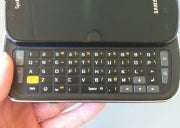

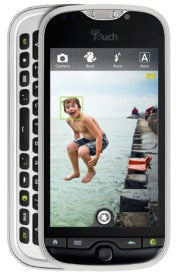





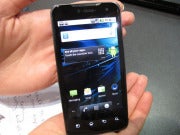
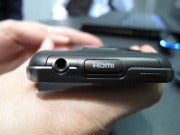


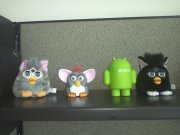
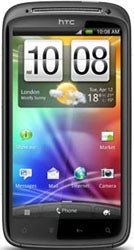
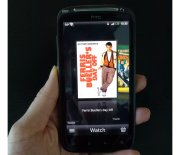
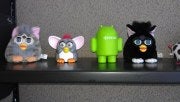

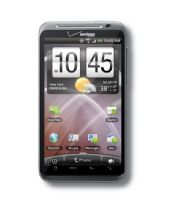



No comments:
Post a Comment